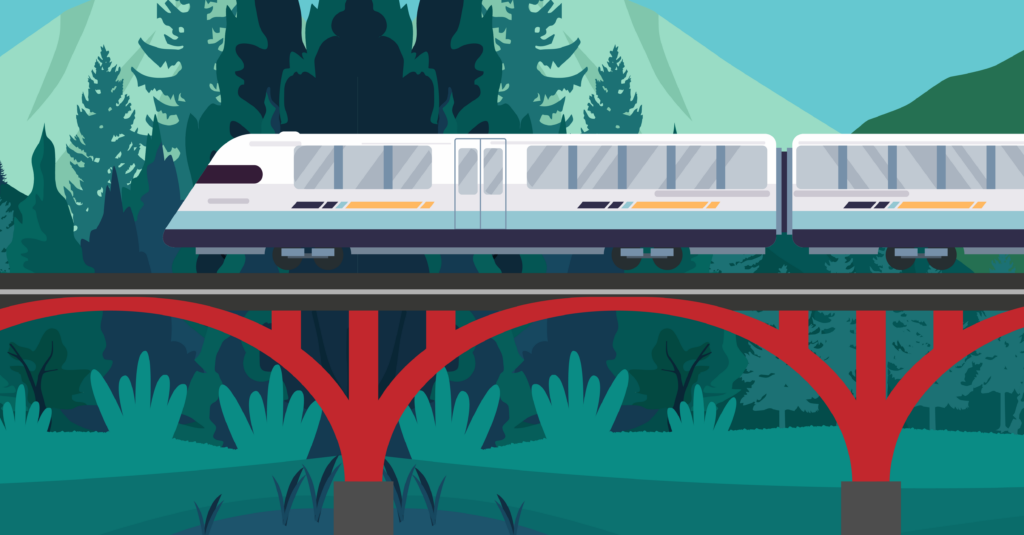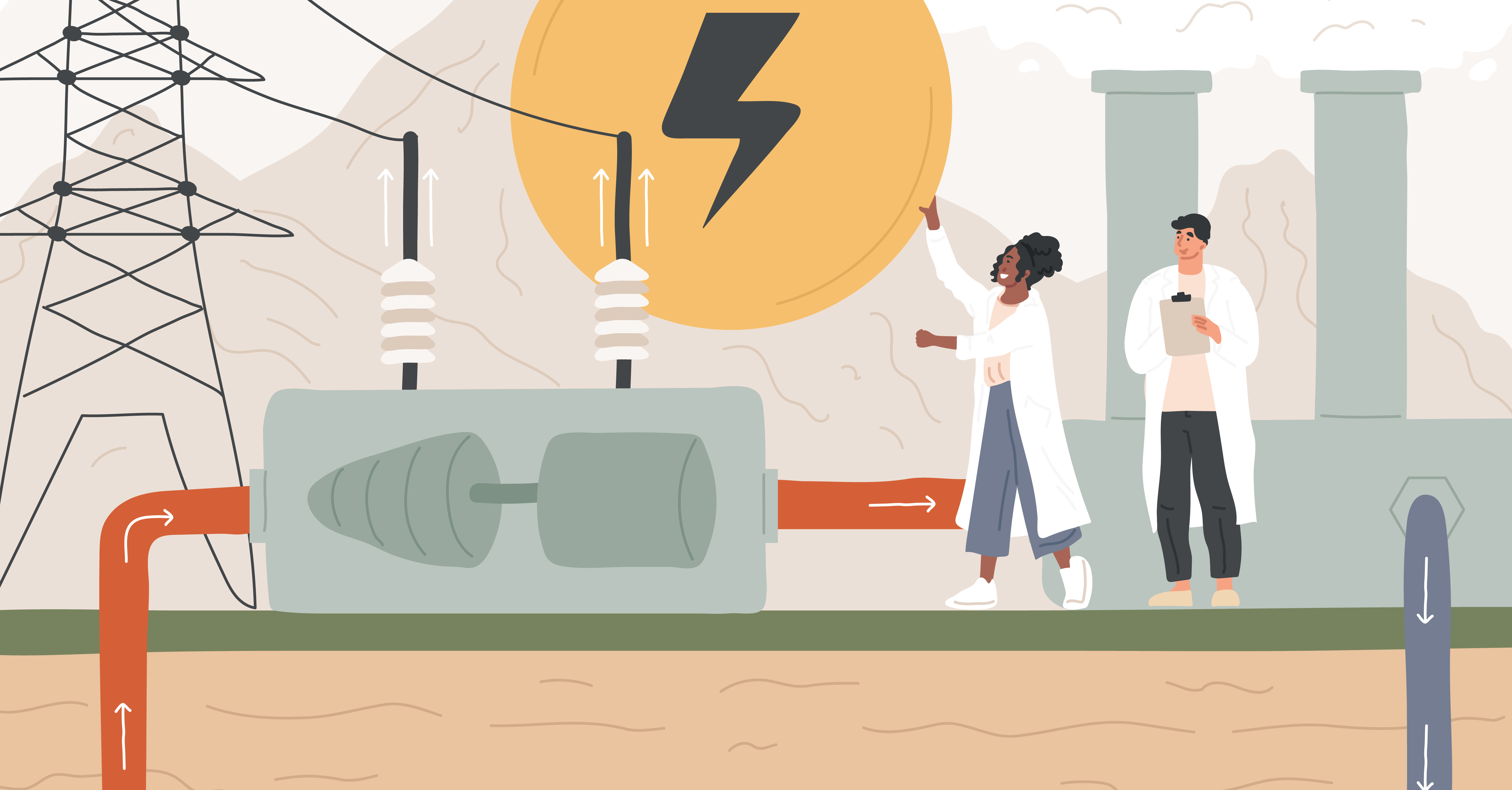Rail Safety: Rolling into the Future with Advanced Safety Innovations
June 27, 2024

In the early hours of July 6, 2013, unimaginable tragedy struck the small town of Lac-Mégantic in Quebec, Canada. An unattended 74-car freight train, heavily loaded with crude oil, derailed in the heart of the town and set off a chain of devastating explosions and raging fires. The disaster unfolded with terrifying speed, claiming 47 lives and forcing 2,000 residents to flee from their homes. The event left a deep and lasting scar on the close-knit community.
The Transportation Safety Board of Canada’s investigation uncovered several critical safety lapses that led to the disaster. The locomotive engineer had parked the train on a descending grade in Nantes, securing it with hand brakes on five locomotives and two additional cars, while also leaving the air brakes engaged. Railway rules dictate that hand brakes alone should hold a train and this must be verified by a test. However, the engineer conducted the test with the air brakes still engaged, which gave him a false impression of security.
Later that night, a fire erupted in the lead locomotive. To control the blaze, firefighters shut off the locomotive’s fuel supply and electrical breakers. This action halted the air brake system’s compressor, leading to a drop in air pressure. After midnight, the depleted air brakes and insufficient hand brakes gave way, causing the train’s uncontrolled descent into Lac-Mégantic.
Given the interconnected nature of rail networks and frequent cross-border transportation of hazardous materials, both the U.S. Department of Transportation (DOT) and Transport Canada implemented significant changes to rail safety protocols after the disaster. They introduced new regulations emphasizing updated safety plans, rigorous risk assessments and enhanced training programs. Both regulators also mandated stricter standards for tank cars carrying flammable liquids, requiring additional safety features such as thicker shells and thermal protection.
Accidents like the Lac-Mégantic tragedy show how important it is for rail transportation organizations to strictly follow regulations, constantly update safety protocols and provide thorough, up-to-date training to better protect employees, passengers, cargo and communities along train routes. This blog explores the concept of rail safety, the key elements of an effective rail safety program and the role of digital safety management software in preventing accidents and enhancing operational efficiency.
Railroad Safety and Regulatory Framework Overview
Rail transportation is one of the most regulated sectors, with a long history of evolving safety measures. Since the 19th century, railroads have been crucial to industrial and economic growth. Early regulations aimed to prevent collisions and enhance rail infrastructure reliability. For instance, in 1883, railroads established time zones in the U.S., which helped standardize schedules and reduce accidents. Additionally, they introduced the Automatic Block Signal system in the late 19th century, significantly improving train separation and reducing rear-end collisions.
Over time, advancements in technology, accident investigations like the Lac-Mégantic catastrophe and a better understanding of risk management have made regulations more comprehensive. In the United States, several key organizations oversee rail, train and railway workplace safety. The Federal Railroad Administration (FRA) enforces safety through regulations such as the Rail Safety Improvement Act of 2008, the Federal Railroad Safety Act and Safety Management System (SMS) requirements. The National Transportation Safety Board (NTSB) investigates major rail accidents and issues safety recommendations. In addition, the Occupational Safety and Health Administration (OSHA) manages workplace safety, including handling hazardous materials, machine guarding, noise exposure, employee training and emergency response.
Together, the FRA, NTSB and OSHA, supported by state and local regulations and industry standards from groups like the Association of American Railroads (AAR), create an all-encompassing framework for rail safety in the U.S. Similarly, Transport Canada has enforced extensive SMSs since 2001 under the Railway Safety Act and the Railway Safety Management System Regulations. The Transportation Safety Board of Canada (TSB) investigates rail accidents to improve safety practices and prevent future incidents.
In comparison, the UK and the European Union have their own regulatory bodies and standards, such as the UK’s Office of Rail and Road (ORR) and the EU Agency for Railways (ERA). These bodies enforce strict safety regulations, conduct regular inspections and mandate comprehensive SMSs to ensure the safety and reliability of European railroads.
Rail Transportation: Leading the Way in Safety and Efficiency
Today, rail transportation stands out as the safest mode of transport due to stringent regulations, infrastructure investments and ongoing safety enhancements. The Association of American Railroads (AAR) reported a 27% reduction in train accidents from 2000 to 2023, with significant declines in collisions and derailments. Railroads also maintain an exceptional safety record for transporting hazardous materials, with over 99.99% of shipments arriving without incident.
Safety improvements have also reduced injuries and fatalities among Class I railroad employees by 63%, reaching an all-time low in 2023. Serious incidents, like the East Palestine, Ohio derailment last year, which spilled over 100,000 gallons (about 378,541 L) of hazardous chemicals and caused significant environmental damage, are rare. When these events happen, rail operators and regulatory bodies respond swiftly to investigate root causes, implement corrective actions and enhance existing safety measures to prevent future occurrences.
Improvements in safety metrics highlight the importance of strict rail safety protocols and advanced technologies in daily operations. Strong safety measures, combined with proactive worker engagement, are key to reducing the risk of derailments, collisions and other accidents. Mandated technologies, such as Positive Train Control (PTC)—which automatically slows or stops trains to prevent accidents—along with trackside detectors, real-time monitoring systems and automated alerts, are essential for detecting hazards and preventing errors. According to the Federal Railroad Administration, the implementation of PTC has contributed to a 30% reduction in train derailments since 2000. Moreover, digital safety management systems streamline processes and enable timely interventions.
These measures contribute to higher reliability and return on investments (ROI) by reducing accidents and improving operational efficiency. According to AAR, annual private investments exceeding $23 billion in the U.S. rail industry have driven innovations that improve operations, ensure robust compliance with safety standards, and, most importantly, protect all stakeholders and the environment.
Key Elements of an Effective Rail Safety Program
Rail regulations require organizations in the sector to implement detailed safety programs to ensure operational safety. These programs consist of extensive policies, procedures and practices designed to prevent accidents, minimize risks and promote a culture of safety. An effective rail safety program typically includes the following elements:
| Rail Safety Program Element | |
|---|---|
| Safety Policies and Procedures | Establish clear expectations, responsibilities and protocols for all employees, covering areas such as track maintenance, equipment operation, emergency response and regulatory compliance. |
| Risk Assessment and Management | Conduct regular assessments to identify potential hazards and vulnerabilities. Implement control measures, conduct safety audits and develop contingency plans. |
| Comprehensive Training and Education | Provide ongoing training on safety protocols, emergency procedures, equipment operation and regulatory compliance. |
| Safety Inspections and Audits | Perform regular inspections and audits of railway infrastructure, equipment and operations to assess compliance and identify areas for improvement. |
| Maintenance Scheduling | Implement a proactive maintenance schedule for railway infrastructure, including track resurfacing and signal system upgrades. |
| Safety Reporting and Incident Management | Establish mechanism for reporting safety concerns, incidents and near-misses. Implement procedures for investigating and addressing these issues to prevent recurrence. |
| Employee Health and Wellness Programs | Promote health and wellness programs, including fatigue management and mental health support, to ensure employees are fit for duty. |
| Emergency Preparedness and Response | Develop and regularly update all-encompassing emergency preparedness and response plans for various emergencies. |
| Safety Culture and Effective Communication | Foster a culture of safety through open communication, encouraging employee participation and recognizing safety achievements. |
| Community and Environmental Safety | Ensure the safety of communities near ail operations and protect the environment through noise control, hazardous material management and mitigating operational impacts. |
| Continuous Improvement Process | Establish a process for continuous improvement in safety practices, including regular reviews and updates based on new insights and feedback. |
Implementing Rail Safety with Advanced Safety Management Technology
While traditional safety programs form the foundation of rail safety, the integration of advanced Safety Management Systems ensures enhanced compliance and efficiency. Intelex digital Environment, Health and Safety (EHS) management applications enable rail organizations to address safety challenges and regulatory requirements effectively by utilizing advanced technology and data analytics. Key components of a comprehensive digital rail safety management system include:
- Incident Management: Tools for reporting, investigating and analyzing safety incidents, including near misses, accidents and injuries. This involves capturing incident details, conducting root cause analysis and implementing corrective actions to prevent recurrence.
- Hazard Identification and Risk Assessment: Functionality for identifying and assessing railway operation hazards, conducting risk assessments, prioritizing hazards and implementing controls to mitigate risks.
- Safety Training Management: Features for managing safety training programs and tracking employee competencies, including scheduling courses and maintaining training records.
- Audit and Inspection Management: Tools for conducting safety audits and inspections of railway infrastructure, equipment and operations. This includes creating checklists, scheduling inspections, conducting field audits and tracking corrective actions.
- Regulatory Compliance Management: Functionality for managing compliance with regulatory requirements, tracking standards and generating compliance reports.
- Document Control: Tools for organizing and managing safety-related documents and records, such as safety policies, procedures, manuals and training materials, ensuring access to up-to-date information.
- Real-Time Monitoring and Automated Alerts: Real-time monitoring of safety metrics and performance indicators, with automated reporting functionalities for actionable insights and alert systems that notify personnel of potential issues immediately.
- Integration with IoT and Sensor Technologies: Integration with Internet of Things (IoT) devices and sensors to capture real-time data from equipment, infrastructure and vehicles for monitoring asset health and predicting safety issues.
- Emergency Response Planning: Features for developing and managing emergency response plans for incidents, such as derailments or hazardous spills. These include establishing emergency procedures and conducting drills to prepare employees for critical situations.
Rail organizations can integrate these advanced tools to enhance the efficiency of their safety programs and create a much safer and more efficient operational environment.
Rolling into the Future
The Lac-Mégantic disaster reminds us how important it is to continuously improve rail safety protocols to prevent such tragedies. Despite stringent safety measures at the time, the incident exposed serious gaps, highlighting the need for extensive training, advanced technology and additional safety features for transporting hazardous materials. By implementing robust safety management systems and enhancing standards, rail organizations can address such gaps and develop a strong safety culture, integrating safety into every aspect of their operations.
A thriving safety culture is key to the success of any safety management system. As Josef Doppelbauer, Executive Director of the EU Agency for Railways, states, “A positive safety culture is characterized by a collective commitment by leaders and individuals to always act safely, in particular when confronted with competing goals.” This culture, built on mutual trust, active employee involvement and confidence in safety measures, is essential for minimizing risks and preventing accidents.
Advanced technology, including automated alerts, real-time environmental monitoring and hazard detection systems, has revolutionized rail safety. These innovations provide railroaders with data-driven insights to proactively identify risks and streamline processes. By committing to rigorous safety protocols and continuous improvement, rail operators can achieve the highest safety standards, working towards a future with no rail accidents and zero harm to workers and communities.
Explore how Intelex EHS Management Software can enhance safety, efficiency and compliance in transportation and logistics. Get access to EHS Software for Transportation and Logistics Demo Playlist!






